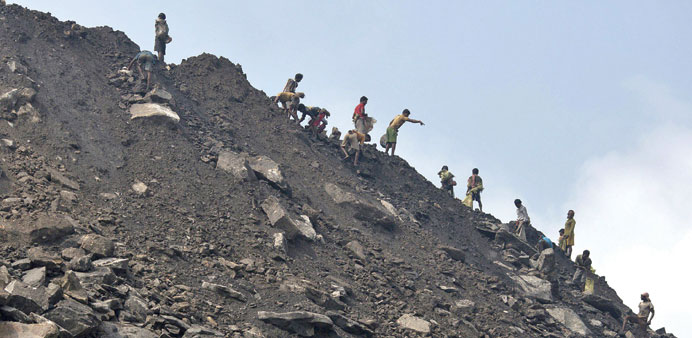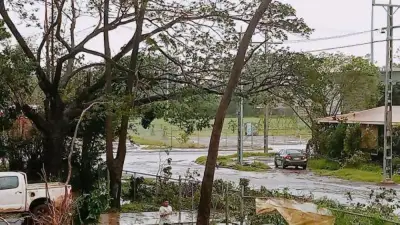Reuters/Jharia, Jharkhand
Prime Minister Narendra Modi is determined to move more than 100,000 people living near coalfields in eastern India to new homes, making it easier to douse underground fires that have burned for a century and mine huge reserves of premium coal.
Reviving output from India’s nationalised coal sector has been one of Modi’s most tangible achievements during his first year in office, one that he hopes will secure continuous power to all and eat into an annual coal import bill of $15bn.
The burning deposits of Jharia, in Jharkhand state, are particularly prized because they are the only source of top quality steelmaking coal in the country. India spends $4bn a year on importing that grade alone.
Modi travelled to Jharkhand in February and urged the chief minister to speed up work on putting out the fires and shifting the people living there.
“The fact that the prime minister is directly involved shows that the government is very serious about it,” Coal Secretary Anil Swarup said in New Delhi. “It’s a huge task but the good news is that we have started moving in the right direction.”
For some of the thousands living in run-down settlements around the coal deposits, the urgency is clear. Shakili Devi, 60, has lost count of the number of huts she inhabited over the years that caved in because of intense heat and shifting ground around her.
“We’re scared, but what can we do?,” she asked, her shack standing next to a crack in the ground leaking hot gas. “We can only wait for the government to find us a new home.”
Until then, Devi and others like her are stuck. Many families are squatters who rely on casual work from contractors working the mines and on free water pumped to the settlements.
The glowing coals and rising smoke date back to 1916, a quarter of a century after private firms began to mine the field. India nationalised most coal assets in the 1970s.
According to experts, those firms failed to backfill mines after digging, exposing them to the open air and allowing fires to start by spontaneous combustion.
Bootleggers who used abandoned mine areas made things worse, because some failed to put out fires they lit to run the stills.
Bharat Coking Coal Ltd (BCCL), the Coal India unit which controls the Jharia field, estimates fires have already devoured about 37mn tonnes of coal and blocked access to 2bn tonnes more, theoretically worth $220bn.
BCCL accounts for about 7% of Coal India’s output and has projected growth of 54% to 53mn tonnes in five years, according to company documents.
Its success will help decide how close Coal India gets to its ambitious target of output of 1bn tonnes by 2019/20.
Previous attempts to control the fires by sealing the surface, trenching and pumping in inert gases had limited success and were blamed for driving BCCL close to bankruptcy.
After 2008, the company tried instead to dig deeper and wider to remove burning coal. Though more effective, this method has been criticised for scarring the landscape.
The coal that heats up to 800 degrees Celsius is then cooled by water overground and stones are deposited around the mines, creating heaps that take almost two years to cool off.
The new method has helped cut the burning area to 2.2 sq km in April 2014 from over 9 sq km six years ago, according to satellite analysis by the state-run National Remote Sensing Centre.
“We are keeping our fingers crossed, but the fire could again get out of control,” said Swarup.
Part-time tutor Arjun Ram, whose father retired from BCCL, lives in a settlement near a hill radiating intense heat.
Three years ago the Jharia Rehabilitation and Development Authority (JRDA) identified Ram as one of about 50,000 people who should be moved but has yet to provide him a home. The number of people looking for a house has doubled since.
JRDA managing director Kripa Nand Jha said the delay in building new quarters was partly due to “confusion” over compensation to be paid under a 2013 land acquisition act.
He said both the federal and state governments, run by Modi’s Bharatiya Janata Party, have agreed to buy land at four times market prices instead of the going rate as in the past.

Locals collect coal from the dump site of an open coal field at Dhanbad district in Jharkhand.


